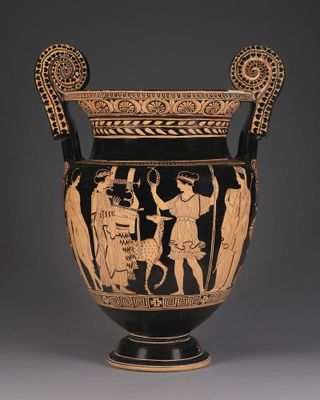
These formed the nucleus for Hope's own collection of vases, which he displayed at Duchess Street. In 1801 Hope purchased the second collection of ancient vases formed by Sir William Hamilton, formerly the British Ambassador to the Naples court. (1807), illustrating objects he had designed for his London house at Duchess Street. The most important of these publications was Household Furniture and Interior Decoration. The vase was once owned by Thomas Hope (1769-1831), the collector, connoisseur, patron and designer, who published a number of influential books of designs. Learn more.The krater was an ancient Greek vase with two handles that was used to mix wine and water. The International Image Interoperability Framework (IIIF) represents a set of open standards that enables rich access to digital media from libraries, archives, museums, and other cultural institutions around the world. Adler Memorial Fund Reference Number 1984.8 IIIF Manifest (circa) or BCE.ģ30 BCE–320 BCE Medium terracotta, red-figure Dimensions 85 × 45.2 × 36.8 cm (33 1/2 × 18 × 14 1/2 in.) Credit Line Katherine K. Dates may be represented as a range that spans decades, centuries, dynasties, or periods and may include qualifiers such as c. Status Currently Off View Department Arts of the Ancient Mediterranean and Byzantium Culture Ancient Greek Title Volute Krater (Mixing Bowl) Place Apulia (Object made in) Dateĭates are not always precisely known, but the Art Institute strives to present this information as consistently and legibly as possible. Since the krater is a funerary vessel, these figures may be symbolic representations of the dead or they may depict marble statues of the tomb’s occupants.

On the back another naiskos (tomb) is decorated with large white figures. On the front of this vessel, a warrior and his horse stand in a naiskos (tomb) surrounded by attendants with offerings above them is the god Eros and on the handles male and female followers of the god Dionysos are depicted.


 0 kommentar(er)
0 kommentar(er)
